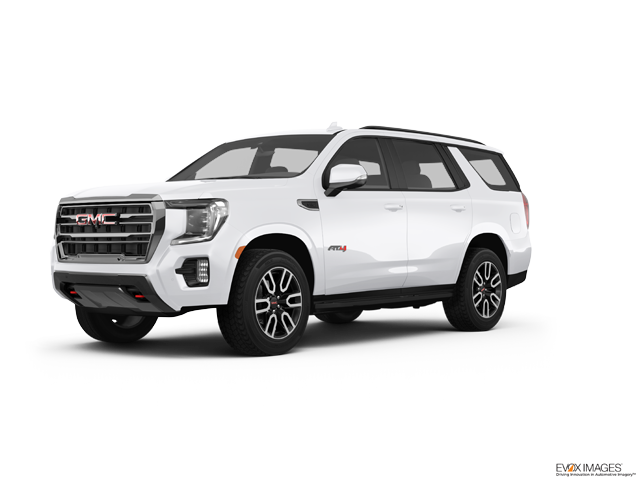The Atlas has a standard Automatic Post-Collision Braking System, which automatically applies the brakes in the event of a crash to help prevent secondary collisions and prevent further injuries. The Yukon doesn’t offer a post collision braking system: in the event of a collision that triggers the airbags, more collisions are possible without the protection of airbags that may have already deployed.
The Atlas has a standard blind spot warning system which uses sensors to alert the driver to objects in the vehicle’s blind spots where the side view mirrors don’t reveal them. A system to reveal vehicles in the Yukon’s blind spot costs extra.
To help make backing out of a parking space safer, the Atlas has a standard rear cross-path warning system, which uses sensors in the rear bumper to alert the driver to vehicles approaching from the side, helping the driver avoid collisions. Rear cross-path warning costs extra on the Yukon.
For better protection of the passenger compartment, the Atlas uses safety cell construction with a three-dimensional high-strength frame that surrounds the passenger compartment. It provides extra impact protection and a sturdy mounting location for door hardware and side impact beams. The Yukon uses a body-on-frame design, which has no frame members above the floor of the vehicle.
Both the Atlas and the Yukon have standard driver and passenger frontal airbags, front side-impact airbags, side-impact head airbags, front seatbelt pretensioners, height adjustable front shoulder belts, plastic fuel tanks, four-wheel antilock brakes, traction control, electronic stability systems to prevent skidding, crash mitigating brakes, daytime running lights, rearview cameras, available all wheel drive, lane departure warning systems and around view monitors.
The National Highway Traffic Safety Administration does 35 MPH front crash tests on new vehicles. In this test, results indicate that the Volkswagen Atlas is safer than the GMC Yukon:
|
|
Atlas |
Yukon |
|
|
Passenger |
|
| STARS |
4 Stars |
4 Stars |
| Neck Injury Risk |
39% |
47% |
| Neck Stress |
129 lbs. |
272 lbs. |
| Leg Forces (l/r) |
297/97 lbs. |
333/811 lbs. |
New test not comparable to pre-2011 test results. More stars = Better. Lower test results = Better.
The National Highway Traffic Safety Administration does side impact tests on new vehicles. In this test, which crashes the vehicle into a flat barrier at 38.5 MPH and into a post at 20 MPH, results indicate that the Volkswagen Atlas is safer than the GMC Yukon:
|
|
Atlas |
Yukon |
|
|
Front Seat |
|
| STARS |
5 Stars |
5 Stars |
| Chest Movement |
.5 inches |
.7 inches |
| Abdominal Force |
48 lbs. |
111 lbs. |
|
|
Into Pole |
|
| STARS |
5 Stars |
5 Stars |
| Max Damage Depth |
14 inches |
14 inches |
New test not comparable to pre-2011 test results. More stars = Better. Lower test results = Better.
Instrumented handling tests conducted by the National Highway Traffic Safety Administration and analysis of its dimensions indicate that the Atlas is 6.1% to 8.3% less likely to roll over than the Yukon.
For its top level performance in IIHS driver and passenger-side small overlap frontal, moderate overlap frontal, side impact, roof strength and head restraint tests, with its optional front crash prevention system, and its headlight’s “Good” rating, the Insurance Institute for Highway Safety grants the Atlas its highest rating: “Top Safety Pick Plus” for 2019, a rating granted to only 122 vehicles tested by the IIHS. The Yukon has not been tested, yet.


